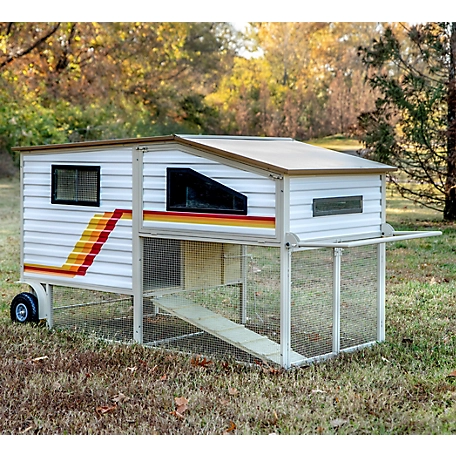Bringing Home Backyard Chickens
Fresh eggs from your own chickens surpass traditional store-bought ones by a long shot. While running a full farm might seem overwhelming, the trend of backyard chickens is rising. Easy-to-assemble coops, the accessibility of chicks at local and national farm retailers, and the possibility of maintaining a small flock in suburban areas are contributing factors. If you’re passionate about farm-fresh eggs and contemplating raising chicks into laying hens, we’re here to guide you through the process!
Check Your Zoning and Choose Your Coop
First, it’s crucial to check your local zoning laws to ensure that your property qualifies for keeping chickens. Additionally, review any regulations regarding property borders and fencing. Some towns mandate that birds must be fenced in, while others specify a required distance between coops or chicken runs and neighboring properties. Understanding these regulations and your property’s layout before purchasing a coop will facilitate a smoother setup process.
Once you’ve clarified your town’s regulations, you can decide on the number of chickens you want and select an appropriate coop. While most chicks are sold in batches of at least six, you can have a larger flock if your land and local laws permit. Keep in mind that while mature chickens generally lay eggs regularly, the frequency can vary by breed. It’s essential to have the right number of chickens to meet your egg production needs. Many coops come with specifications on the number of chickens they can accommodate, simplifying the selection process. Ensuring adequate space for your birds is crucial for their well-being and productivity.
When choosing a coop, consider factors such as size, ease of cleaning, and access to egg retrieval. Coops vary in design, with some offering options to attach larger runs, external access to nesting boxes for convenient egg collection, and easy-to-clean trays beneath nesting areas. Larger and feature-rich coops tend to come with a higher price tag, so it’s important to choose one that aligns with your requirements and budget. If you anticipate expanding your flock, opt for a reputable brand that offers modular designs for easy expansion. For those who prioritize aesthetics, there are charming coop options available from Tractor Supply Co. that combine functionality with visual appeal.
Feeling a little whimsical and fun? How about this fun camper coop for your yard? It’s sure to make the neighbors laugh, and your chickens will love it!

Easy to move and absolutely fun, we love this camper-coop from Tractor Supply!
Choose Your Chickens & Bringing Them Home
Once you’ve set up your coop and chicken area, you can choose your chicks! Raising baby chicks is often easier, as they’re easy to purchase at most farm supply stores in the spring, and you don’t have to worry about introducing different chickens that weren’t raised in the same flock. When it comes to laying hens, there are tons of breeds to choose from—Americanas and Easter Eggers are popular for their fun-colored eggs.
The Leghorns (the traditional white chicken with red combs), Rhode Island Reds, and Plymouth Rocks are less exciting but with higher egg volume. They are all easy-keepers, cold-hardy, and good in various temperatures and climates. Another easy breed for beginners is the Australorps, incredibly docile chickens that are better for family farms and yards where children may want to handle them. It’s also good to remember that you do not need a rooster for your hens to lay! Roosters can become aggressive, so unless you are an experienced chicken handler, we do not recommend starting out with a rooster in your flock. Keep the flock small and simple, then expand over time based on your success!
Once you’ve selected your chickens and your coop is set up and ready to go, it’s time to bring them home! Have some Curicyn on hand in case of any issues or injuries, and enjoy the chirping of chicks as they grow into laying hens!

Curicyn’s wound care products are safe to use on poultry and a smart choice to have on hand when bringing home your backyard chickens.
We can’t wait to hear how your flock is doing! Tag us on social at @Curicyn so we can see and share in your backyard chicken stories, too!

